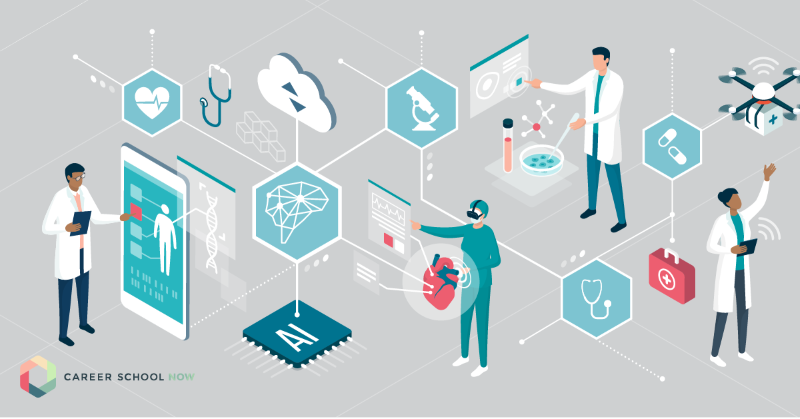Medical Administration Programs: What to Search for in a Top quality Program
Best Practices in Medical Management for Improving Performance and Minimizing Expenses
In the ever-evolving landscape of healthcare, the pursuit of ideal practices in clinical administration is vital for improving efficiency and curbing costs. By incorporating sophisticated innovations such as electronic wellness records and telemedicine, healthcare suppliers can streamline procedures and enhance client treatment.
Leveraging Advanced Innovation
In today's swiftly progressing medical care landscape, leveraging innovative innovation is no longer optional but vital for reliable medical management. The assimilation of electronic remedies into healthcare systems has actually transformed the method centers run, improving processes and enhancing client treatment. Electronic Health And Wellness Records (EHRs) are critical, providing comprehensive client information that can be accessed instantly by authorized employees, hence minimizing redundancy and reducing mistakes. By streamlining client details, EHRs eliminate the requirement for difficult documents and assist in seamless interaction among doctor.
Telemedicine is one more technological improvement that has reinvented client interaction. It offers convenience for both patients and healthcare specialists by making it possible for remote consultations, which can minimize the need for in-person check outs and enhance appointment organizing. In addition, telehealth systems can extend healthcare access to country or underserved areas, linking gaps in care distribution.
Moreover, the usage of Artificial Intelligence (AI) and artificial intelligence is coming to be progressively common in anticipating analytics, enabling very early discovery of prospective wellness concerns and even more informed decision-making. These innovations, when incorporated successfully, can enhance diagnostic accuracy and individualize patient therapy plans, eventually causing enhanced medical care outcomes and functional efficiency.
Optimizing Resource Allotment
Reliable source appropriation is essential for making best use of the effectiveness of clinical administration. By tactically handling resources such as personnel, equipment, and financial resources, health care facilities can dramatically boost their operational performance, enhance client outcomes, and lower unnecessary expenditures. The very first step in enhancing resource allowance entails performing a comprehensive evaluation of present assets and determining areas where resources may be underutilized or exhausted. This analysis should be data-driven, utilizing metrics and analytics to inform decision-making procedures.
Focusing on resource allowance based on individual needs and solution needs is vital. Implementing versatile staffing models can additionally maximize labor resources by adjusting employees allowance in action to fluctuating individual volumes.
Funds ought to be thoroughly kept track of and allocated with strategic foresight to support both temporary functional demands and long-lasting institutional objectives. This consists of investing in training programs that boost personnel expertises and adopting energy-efficient practices that minimize operational costs (medical administration). Ultimately, a maximized source allocation approach cultivates a lasting medical care setting that is responsive, effective, and economically prudent
Streamlining Operations Processes
When health care centers aim to boost functional effectiveness, simplifying process processes ends up being a pivotal focus. Reliable workflows minimize redundancy, remove unnecessary steps, and improve sychronisation amongst health care professionals. This approach not only accelerates solution distribution but additionally enhances the quality of person treatment.

Next, innovation combination plays a considerable role in streamlining process. Implementing electronic wellness documents (EHRs) and electronic doctor order access (CPOE) systems decreases documentation, decreases human mistake, and ensures info is accessible to all appropriate employees. Additionally, leveraging telemedicine systems can improve patient consultations and follow-ups, minimizing the strain on physical framework.

Eventually, structured operations lead to set you back decreases and enhanced client fulfillment, promoting an extra lasting healthcare setting.
Enhancing Data Management
Building upon streamlined workflows, maximizing data monitoring comes to be a crucial element beforehand healthcare management. Reliable data management systems are crucial for preserving accurate patient documents, enhancing decision-making, and making certain compliance with regulatory standards. By executing robust data administration remedies, healthcare centers can enhance the quality of individual care while at the news same time decreasing operational prices.
One trick facet of improving information management is the combination of innovative digital health and wellness record (EHR) systems. These systems help with the smooth exchange of patient details across different departments, minimizing replication of examinations and minimizing errors. A well-designed EHR system supports data analytics, allowing doctor to determine fads and make informed choices pertaining to patient care.
Additionally, protecting patient information is critical. Embracing thorough cybersecurity steps, consisting of security and regular audits, guarantees the honesty and confidentiality of delicate information. This not just secures individuals however likewise preserves the organization's reputation.
Buying personnel training is an additional crucial variable. Informing healthcare experts on data administration methods enhances their ability to properly utilize modern technology, leading to improved client end results. Finally, enhancing data management via innovative innovation and comprehensive training is important for achieving performance and cost reduction in medical management.
Fostering Collaborative Interaction
A crucial element beforehand medical administration is fostering joint communication amongst medical care specialists. Efficient interaction is paramount for guaranteeing smooth person treatment, maximizing therapy results, and decreasing errors. By motivating open discussion and sychronisation throughout multidisciplinary teams, health care companies can improve their functional efficiency and decrease unneeded costs.
Central to this technique is the combination of interaction innovations such as digital health and wellness documents (EHRs) and secure messaging systems, which facilitate the fast exchange of vital client information. These tools allow healthcare companies to access and share information in genuine time, guaranteeing that all employee are notified and lined up in their decision-making processes. Moreover, regular group meetings and interdisciplinary rounds can even more advertise a society of cooperation and accountability.
Training programs concentrated on improving communication abilities are likewise essential. These programs can help staff develop the capacity to share details plainly and listen proactively, therefore minimizing misunderstandings and promoting a helpful workplace. In enhancement, embracing standard communication click to read procedures, such as SBAR (Situation, Background, Evaluation, Suggestion), can simplify the exchange of info, ensuring that important details are conveyed succinctly and properly. Eventually, fostering joint interaction brings about improved healthcare delivery and expense financial savings (medical administration).

Conclusion
Incorporating innovative innovation, such as digital health and wellness records and telemedicine, alongside optimized source allowance and structured process processes, is important for boosting effectiveness in medical administration. Effective information monitoring and promoting collective interaction among health care teams are critical for reducing redundancies and boosting care quality. By prioritizing preventive treatment and engaging in top quality renovation efforts, medical care organizations can attain considerable price financial savings and boosted patient outcomes, thus making sure sustainable health care distribution in a significantly complicated setting.